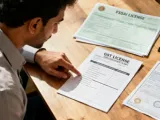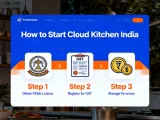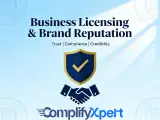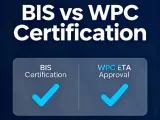Electronic and wireless product importers usually face some setbacks and legal problems during their attempt to secure the WPC ETA certification. This certification is an important component for bringing wireless products into the Indian market.
Learning about the common mistakes in WPC ETA certification made by other importers will help you during your WPC ETA approval process. Avoiding these top mistakes is vital to easy customs clearance, quicker access to markets, and company reputation.
So, to help electronics importers avoid the top mistakes related to WPC ETA certification, this blog presents practical help to learn. So, continue reading to learn more about this certification.
Table of Contents
What is WPC ETA Certification?
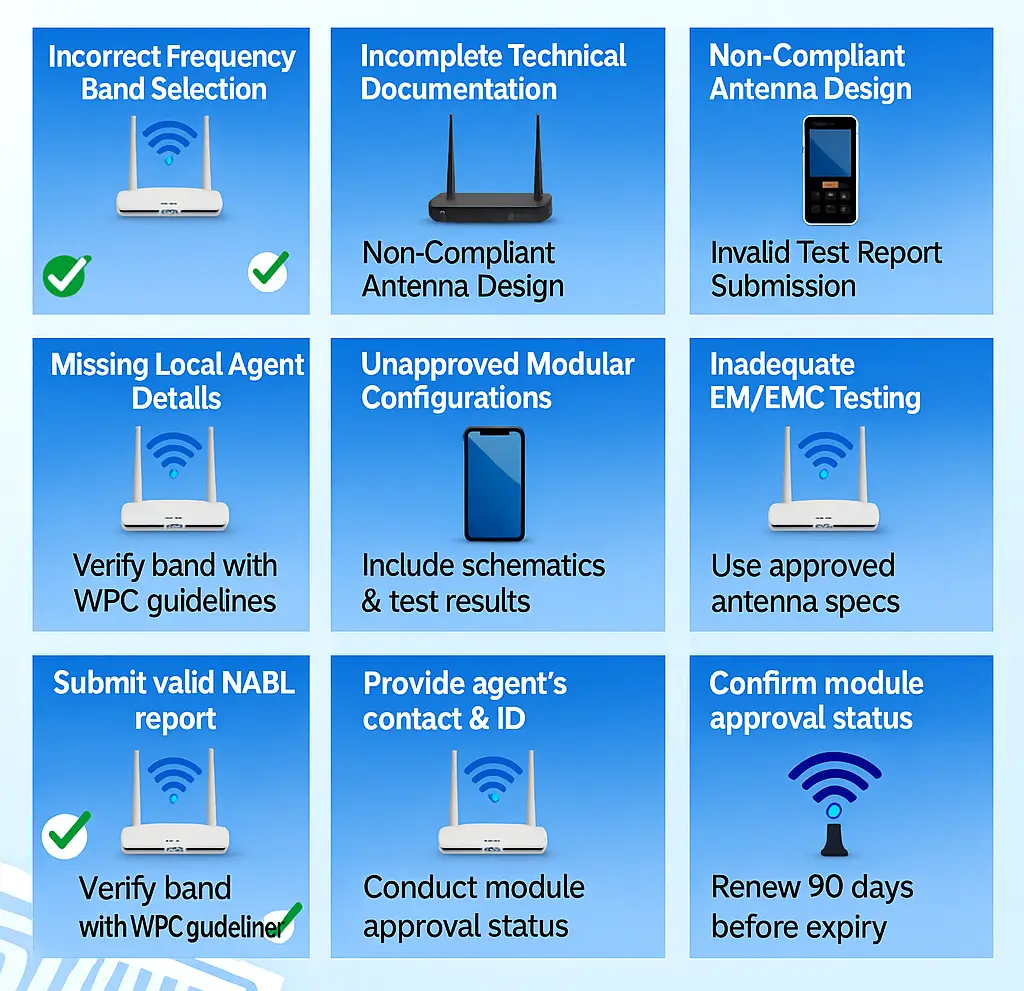
The WPC ETA, or Wireless Planning and Coordination Equipment Type Approval certification, is a necessary document for manufacturing, importing, and selling wireless technology-based electronics in India.
It is governed by the Department of Telecommunications or DoT. WPC ETA approval ensures electronic products that use ZigBee, Wi-Fi, Bluetooth, RFID, and other wireless technologies comply with the country's spectrum rules and regulatory standards.
If WPC ETA approval is not available, customs can detain wireless electronic products and impose severe penalties.
WPC certification mistakes often occur when importers submit incomplete documents or use unaccredited test labs, leading to serious delays in certification.
Mistake 1: Incomplete or Incorrect Documentation
One of the most common mistakes in WPC ETA certification is assuming older compliance documents will be accepted even when rules have changed.
Missing RF test results, wrong technical specifications, or compliance papers without renewal can bring in government queries or rejections. These mistakes can cause a delay in your wireless product importing process.
How to Avoid:
- Keep the essential papers like valid RF test results, technical datasheets, manufacturer notes, and product manuals.
- Check all the entries, mainly the frequency bands, hardware descriptions, and power ratings.
Mistake 2: Not Complying with RF Regulations
Meeting all WPC ETA certification requirements means wireless device importers must ensure their products comply with frequency regulations.
There are strict rules from the governments about the permissible radio frequencies that wireless devices can use. Some importers forget about these standards and import devices that operate out of the regulated spectrum. The WPC ETA approval board may reject applications like this.
Best Practices:
Look up the latest spectrum rules before picking or purchasing foreign items.
Work on strong RF testing at trustworthy labs that satisfy not just local but global standards.
Wireless device importers must put effort into preparing test reports, product manuals, and technical details to meet the WPC ETA certification requirements. Get expert help with WPC ETA certification.
Mistake 3: Working With Non-Accredited Testing Labs
The WPC ETA approval process accepts RF test papers from accredited labs, which are normally certified by NABL or ILAC in India. Importing companies sometimes test the products at local labs that lack WPC certification, and this invalidates the whole WPC ETA certification procedure.
Prevention Steps:
- Check that the lab you chose is recognized by WPC before any product evaluation.
- Look up the accreditation status online or through the lab's paperwork.
Mistake 4: Incorrect Product Categorization
Categorization of electronics is essential. For example, Bluetooth speakers are not Wi-Fi devices, and RFID units are not generic wireless devices.
Mismatching can cause delays in processing and even rejection. WPC ETA certification is supported by accurate product categorization so that the application of proper regulatory requirements will be correct.
How to Avoid:
- Look up the official WPC product type and the list of frequency bands.
- Work with customs brokers or an expert in regulations if you have doubts about device classification.
Mistake 5: Inaccurate Application Details
Mistakes can occur in technical standards, business names, contact information, and model numbers. Even negligible typos and obsolete product details can confuse people. It also makes the WPC officials ask for revisions and additional evidence. You should avoid these aspects to earn your WPC ETA certificate in India without interruptions.
Steps to Avoid:
- Application responsibility should be assigned to operatives or professional consultants who are detail-oriented.
- Verify useful data with manufacturers' datasheets and importing paperwork prior to submission.
Mistake 6: Tracking and Response Failures
Wireless device importers must actively track their WPC ETA approval application statuses. Not doing this and not responding to government queries is a mistake. There are websites that offer status updates and messages, but if candidates ignore them and reply late, the processing will be delayed.
Best Tips to Follow:
- Appointing an employee to watch the application portal every day is a good idea.
- Address government queries quickly and clearly to avoid unwanted delays.
Mistake 7: Outdated Knowledge of Guidelines
Regulations governing WPC ETA certification requirements can change frequently. If you are not updated, you may need to face invalid submissions, non-compliance risk, and spending related to redoing documentation.
Lots of electronics importers rely on obsolete advice or forms, especially when they work with the latest wireless tech products.
Recommendations to Do:
- Learn the real DoT warnings while routinely checking the WPC site for news.
- Team up with WPC ETA compliance consultants to effectively oversee regulatory changes.
- Wireless device importers meet with WPC ETA compliance issues when they ignore the changed rules. They should also stop relying on unqualified persons during the WPC ETA certification procedure.
Mistake 8: Ignoring Import License Differences
Electronics importers often get confused between WPC ETA certification and WPC Import License requirements. Both of these are needed, but each has different purposes.
WPC ETA certification is to prove that the products meet wireless equipment standards. An Import License, in parallel, promotes customs clearance.
Staying educated in the field helps brands minimize WPC ETA compliance issues for imports.
Guidance to Know:
- Review gadgets and important situations. This is a must to understand if the two distinct certificates are in the requirements.
- Talk with import experts first. If the imported devices are new to your market, they can help you.
Need Help with WPC ETA Certification?
Navigating WPC ETA certification requirements can be complex. Electronics importers often benefit from expert guidance to avoid costly mistakes and accelerate their WPC ETA approval process. ComplifyXpert specializes in helping importers streamline their compliance journey.
Final Thoughts
In short, obtaining WPC ETA certification is essential for electronics importers targeting the large wireless devices market in India. As a company, you can take steps to simplify WPC ETA approval to take advantage of the market's opportunities for wireless innovation.
Businesses that are aware of the common mistakes in WPC ETA certification save time and money, reduce risks of rejection, and enjoy a smooth approval process.



